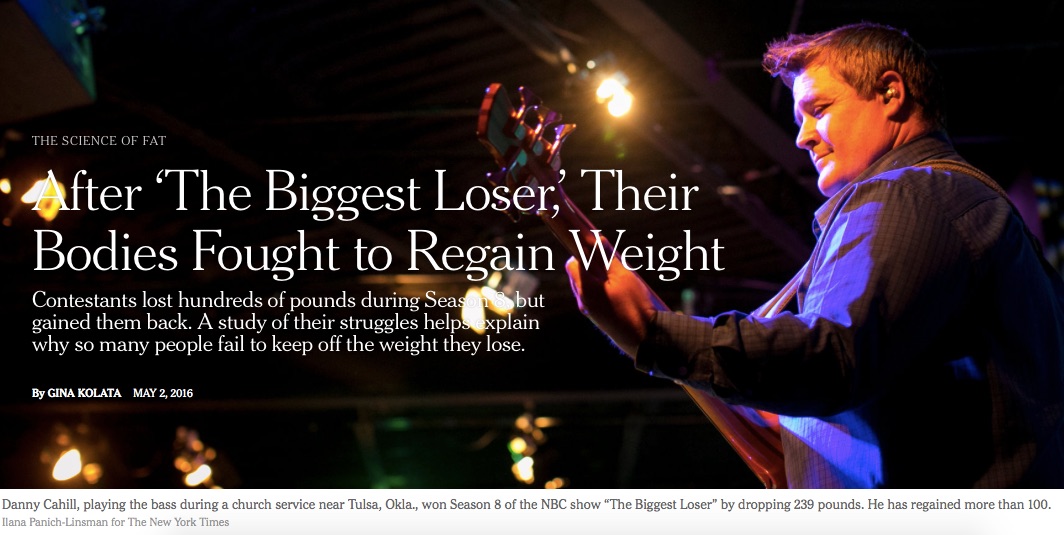
Respect Your Set-Point: A Follow-Up To The NYTimes “Biggest Loser” Article
May 14, 2016 // Wellness
People haven’t stopped talking about recent The New York Times article that exposed the weight struggles and metabolic regressions of the contestants of NBC’s The Biggest Loser.
“It has to do with resting metabolism, which determines how many calories a person burns when at rest. When the show began, the contestants, though hugely overweight, had normal metabolisms for their size, meaning they were burning a normal number of calories for people of their weight. When it ended, their metabolisms had slowed radically and their bodies were not burning enough calories to maintain their thinner sizes.” [New York Times; May 2, 2016]
The metabolism, which is a collective measure of overall cellular activity within the body, is highly influenced by one’s responses and expressions to their environment. These responses and expressions are physical, emotional, biochemical, and when combined, this creates a general stress resultant.
Weight, in terms of pounds, is a byproduct of your body’s adaptation(s) to your environment.
It works like this:
-
Your day-to-day routine is your environment. This includes your home life, work, and all things you do regularly.
-
Your environment produces a certain stress.
-
The way you respond to the stress yields your metabolism.
-
Your metabolism then dictates the weight, shape, and size of your body.
Does That Make Sense?
The NYT article was a great way to explain the science of the resting metabolism and how it’s influenced.
Like most health principles, “the difference between medicine and poison is the dosage.”
It’s no secret that diet and exercise have a huge influence on the level of metabolic activity. Most people grasp the concept that if they exercise more (or even at all), and if they make better nutritional choices, they can affect their metabolism.
However, too much too fast can backfire.
Once you have held a weight steady for an extended period of time, it becomes your set-point.
Your set-point is your permanent response to your environment, unless…
You change your set-point.
The Very Sensitive “Set-Point”
Changing your set-point is similar to driving a manual/stick shift.
As you begin to address your set-point with more exercise and better dieting, you have to start out slow and easy, like driving in first gear. In both situations, too much, too fast will quickly burn out your engine.
Pushing yourself to the absolute maximum is creating too much stress in the body and your body feels threatened, and the body responds accordingly.
You have to play nice. Period. Got it?
I recommend starting with only one small change to your routine.
A small change requires just a small amount of extra effort/attention/care, and is more likely to be sustainable. If it’s sustainable, it’ll eventually become automatic, which means it becomes your new normal.
Small changes should be added like layers. Layers to a foundation do not follow a timeline; it is person-specific.
Your set-point is based upon how well your body responds to the stresses of your environment. You have to respect your set-point and find the sweet spot of improving your diet and exercise habits without over-stressing your body.
This is why setting a timeline for weight loss is illogical and irresponsible.
Change Your Focus
You’re better off focusing on the behaviors to make a sustainable, permanent change to your set point.
The measure(s) of success is the effort, and not the result.